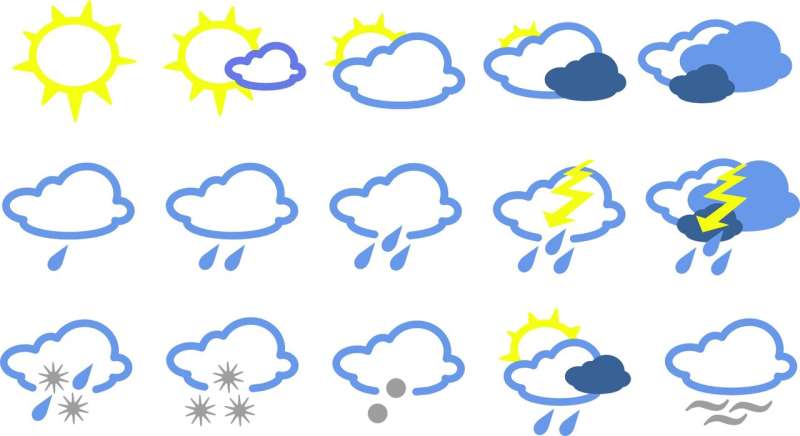This article has been reviewed according to Science X's editorial process and policies. Editors have highlighted the following attributes while ensuring the content's credibility:
fact-checked
peer-reviewed publication
trusted source
proofread
Strong El Niño makes European winters easier to forecast

Heavy rain and flooding in Brazil in November could tell forecasters whether December, January and February in Britain will be cold and dry or mild and wet.
This is because forecasting European winter weather patterns months in advance is made simpler during years of strong El Niño or La Niña events in the tropical Pacific Ocean, a new study has found.
A strong El Niño or La Niña in the Pacific Ocean can bring big changes in temperatures, wind patterns and rainfall patterns to South America. When this occurs, forecasters can more easily tell if Europe will have a mild winter or a cold one. In contrast, when tropical Pacific temperatures were close to average, it was more difficult for forecasters to predict what sort of weather Europe would have in December, January and February.
Dr. Laura Baker, lead author of the research at the University of Reading and National Centre for Atmospheric Science, said, "Understanding when seasonal forecasts are likely to be more or less reliable could help everyone from energy companies planning for winter demand to government agencies preparing for potential weather-related emergencies. Our findings could help to improve long-range winter forecasts in other parts of the world, as well as Europe.
"As climate change continues to alter global weather patterns, research like this plays a crucial role in improving our ability to anticipate and prepare for future winter conditions."
Decades of data
The study, published in Geophysical Research Letters, examined the skill of seasonal forecast systems in predicting two key atmospheric patterns that shape winter weather in Europe: the North Atlantic Oscillation (NAO) and East Atlantic Pattern (EA).
The research team analyzed 30 years of winter forecasts from seven different prediction systems used across Europe and North America and archived by the ECMWF Copernicus Climate Change Service. By looking at which winters were predicted well or poorly across multiple systems, they were able to identify common factors influencing predictability.
The researchers found that the ability to predict these patterns varies greatly from year to year. Some winters are much more predictable than others, depending on conditions in other parts of the world. The study shows that when strong El Niño or La Niña events are occurring, weather forecasters can place more confidence in long-range predictions for the coming winter. However, in other years, such forecasts should be viewed with more caution.
The study also revealed that unusual conditions in the upper atmosphere over the Arctic can make European winters harder to predict. When sudden changes occur in these high-altitude wind patterns, forecast systems often struggle to anticipate the impacts on weather at ground level.
More information: Understanding the intermittency of the wintertime North Atlantic Oscillation and East Atlantic Pattern seasonal forecast skill in the Copernicus C3S multi‐model ensemble, Geophysical Research Letters (2024). DOI: 10.1029/2024GL10847
Journal information: Geophysical Research Letters
Provided by University of Reading





















